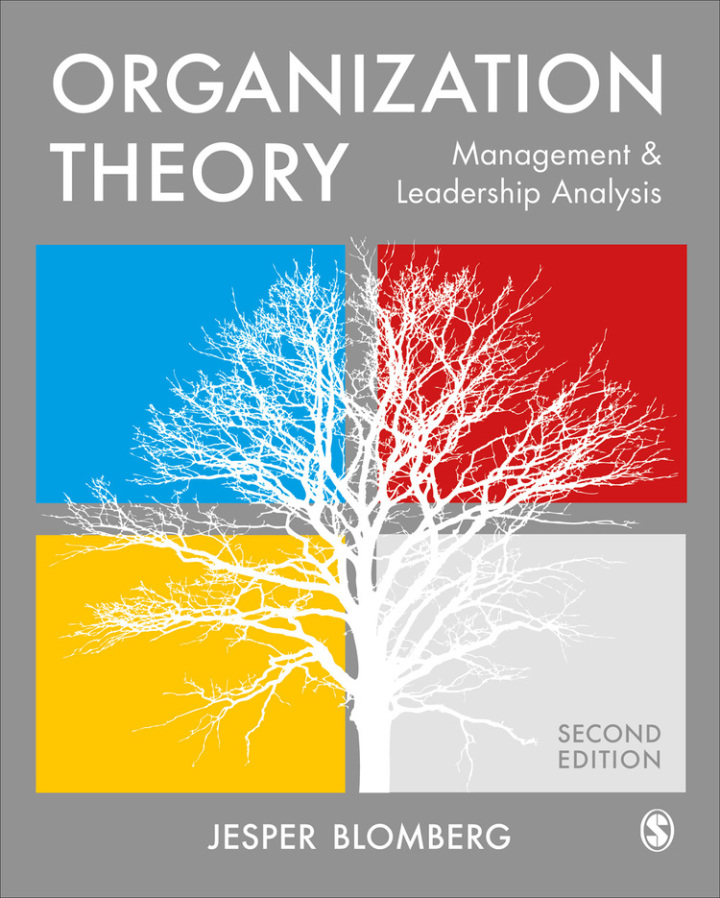
Organization Theory 2nd Edition - Management and Leadership Analysis
PUBLISHER: Sage
Trường ĐH, Nhóm, Thư Viện: Gọi 0915920514 để báo giá eBook hosting trên Vital Source hoặc mua Sách In
Lý thuyết tổ chứcPhân tích quản lý và lãnh đạoTrong Lý thuyết tổ chức: Phân tích quản lý và lãnh đạo, Jesper Blomberg khám phá các lĩnh vực lý thuyết tổ chức và quản lý, hiểu rõ các lý thuyết phức tạp và khuyến khích tư duy phê phán.Cuốn sách phân tích các tổ chức thông qua bốn khung lý thuyết, cung cấp cho sinh viên một cấu trúc rõ ràng mà họ có thể sử dụng để hiểu các vấn đề tổ chức phức tạp:· khung kết cấu· Khung Nhân sự· khung năng lượng· khuôn khổ biểu tượngMỗi khuôn khổ được khám phá bằng một chương bao gồm những điều cơ bản, tiếp theo là một chương nâng cao hơn để học sinh có thể hiểu sâu hơn. Một tình huống nghiên cứu ở cuối cuốn sách kết hợp giữa lý thuyết và thực hành, giúp sinh viên có cơ hội áp dụng những gì đã học vào tình huống quản lý thực tế.Cuốn sách này phù hợp cho sinh viên đại học và sau đại học đang theo học Lý thuyết tổ chức và quản lý.Cuốn sách được bổ sung bởi nhiều nguồn tài nguyên trực tuyến bao gồm các slide PowerPoint, Sách hướng dẫn dành cho giảng viên và Ngân hàng bài kiểm tra.Jesper Blomberg là Phó Giáo sư tại Trường Kinh tế Stockholm, Thụy Điển.
Figures and TablesAbout the AuthorOnline Resources1 An Introduction to Organization Theory, Management and Leadership AnalysisThe empirical material of organizational analysisCritical thinking, theoretical pluralism and multi-frame analysisFour frameworks on management, organization and leadershipA toolbox of analytical devicesHow to use this bookFurther readingVideosNotes2 Structures, Formalized Processes and Rational Decisions – The Basics of the Structural FrameworkWhat company is this?The historical roots of the structural frameworkThe basic assumptions of the structural frameworkEfficiencyDivision of laborCoordinationUncertaintyMatrix organizationFurther readingVideosNotes3 An In-Depth Structural Framework – Lean, Team, Leadership and ProjectsThree models for an in-depth analysis of situational dependenciesLean productionVirtual networks, outsourcing, markets and controlThe industrial network approachStructural leadershipHigh-performance teams and efficient project managementStructural framework ethicsThe structural framework’s generic questions, strengths and weaknessesFurther readingVideosNotes4 Human Resources, Relations and Competence – The Basics of the HR FrameworkThe historical roots of the HR frameworkThe basic assumptions of the HR frameworkHuman needsHuman relations and communicationOrganization of workFurther readingVideos5 An In-Depth HR Framework – Motivation, Learning, Teams and LeadershipThe SDT model – a more nuanced picture of motivationNonaka and Takeuchi’s model for the creation of organizational knowledgeHigh-performance teamsEffective communication in high- and low-performance management teamsAgile projectsLeadership based on an HR frameworkHR ethicsThe HR framework’s generic questions, strengths and weaknessesFurther readingVideosNotes6 Stakeholders, Power, Politics and Conflict – The Basics of the Power FrameworkThe historical roots of the power frameworkThe fundamental assumptions of the power frameworkA hushed-up and critical perspectiveLukes’s three dimensions of powerPfeffer’s model of conflict and power struggleMapping the political landscapeAn effective power strategyTwo established negotiation modelsThe problematic first and second dimensions of powerFurther readingVideos7 The Power Framework In Depth – Structures, Norms and Fair OrganizationsKanter’s structural explanation of power and influenceWeber’s three types of legitimate authorityMichels’ theory of the iron law of oligarchyAcker’s theory of bureaucratic control and society’s gender systemsBurawoy’s labor process theory – manufacturing consentFoucault’s theory of structuring and self-disciplineThe practical benefit of more complex power theoriesThoughts, texts and conversations – linguistic and symbolic models of powerLeadership from a power framework perspectivePower framework ethicsThe power framework’s generic questions, strengths and weaknessesFurther readingVideos8 Organizational Culture, Values, Interpretations and Norms – The Basics of the Symbolic FrameworkThe historical roots of the symbolic frameworkThe basic assumptions of the symbolic frameworkSchein’s three levels of cultureHofstede’s model for comparing and describing cultureSubculturesGroupthinkCharismatic, transformative and symbolic leadershipBrunsson’s model for decision rationality, action rationality and organizational hypocrisyFurther readingVideos9 An In-Depth Symbolic Framework – Micro, Meso and MacroSensemaking and human actionMicro: Weick’s seven properties of sensemakingMeso: Weick’s pulsating organizational modelNeo-institutional organizational theory – from micro and meso to macroProjects based on a symbolic frameworkA final in-depth examination of symbolic leadershipSymbolic framework ethics, the four frameworks and implications for practiceThe symbolic framework’s generic questions, strengths and weaknessesFurther readingVideosNote10 A Case Study in Theory-Driven Practical AnalysisKnowledge management at RMCGFormulating an introductory questionA short structural framework analysisA short HR analysisA short power analysisA short symbolic analysisA concluding integrated analysisThe reflective practitioner and the good leaderLast word: There is so much more!Case Study ZoneTwo cases of organizationCreative Chaos at Mungo XRobin on AITSReferencesIndex















